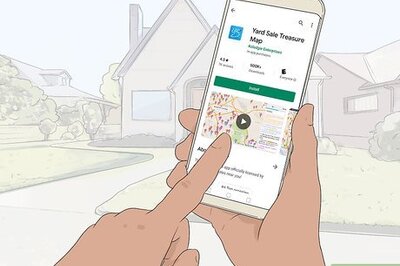
views
CHENNAI: Ever heard of an ambulance that doesn’t break the speed limit? You may be surprised, but sometimes neonatal ambulances have been known to move so slowly, that even a fast cyclist could overtake them. Seven months after the first neonatal ambulance operated by the GVK EMRI 108 services in Tamil Nadu was launched, the fleet has expanded and saved the lives of a whopping 70 newborns in Chennai, every single month.“Normally in the city, speed is of the essence and the ‘scoop and carry’ approach works well, but for newborn (neonatal) children, too much shaking and bad roads could act adversely,” explains BN Sridhar, COO of the Public Private Partnership that is best known as ‘108’.As related by Principal Secretary to the Government - Health, Girija Vaidyanathan earlier, Tamil Nadu does have an enviably low Infant Mortality Rate of 28 deaths per 1000 births, which is well below the national average of 37/1000. However, if the state’s ambitious target of bringing the number down to 20/1000 is top be realized, neonatal ambulances hold the key. Branded with large pictures of a smiling infant, the ambulances that were initially from UNICEF, have been fitted with state-of-the-art equipment for neonatal care. After the first vehicle was inaugurated by State Health Minister Dr VS Vijay as a pilot scheme, three more vehicles have been added to show how much of a difference it can make in the city.While most of the cases are received for children that are ‘just born’, children aged up to 28 days are also received in the ambulance, she adds. Dr VS Vijay himself had conceded that, “Forty percent of infant deaths occur on the first day,” hopeful of a resolution. Most often the complications include pre-term asphyxiation (where the baby cannot breathe through its lungs), hypoxia (loss of oxygen content in the body), hypothermia (drop in body temperature) and multiple infections that babies are susceptible to.Specially trained by neonatal care experts in the Institute of Child Care (ICH) in Egmore, the Emergency Management Technicians (EMTs) inside the ambulance are equipped to handle almost any neonatal emergency. “This service has been working on a referral basis - doctors who have handled births after which the babies have developed complications give us a call and we dispatch the vehicle immediately,” adds Sridhar as he explains how these calls always come from PHCs and smaller hospitals where a Neonatal ICU is not available. “Once our EMTs get there, they stabilize the babies at the hospital and only then transfer them to the ambulance. After this they are kept on a ventilator and kept stable till they reach a hospital where a Neonatal ICU is present. But before they sign off, they perform one more stabilization procedure there,” explains Adeline Israel, who has trained these ambulance riders at EMRI.For now, sources at 108 have said that the focus is on getting lighter ventilators and movable equipment that is easier to use, is more advanced and can be easily handled by the female techs. And yes, this is important as, “the male to female ratio among the techs is 50 – 50,” adds Adeline.



















Comments
0 comment